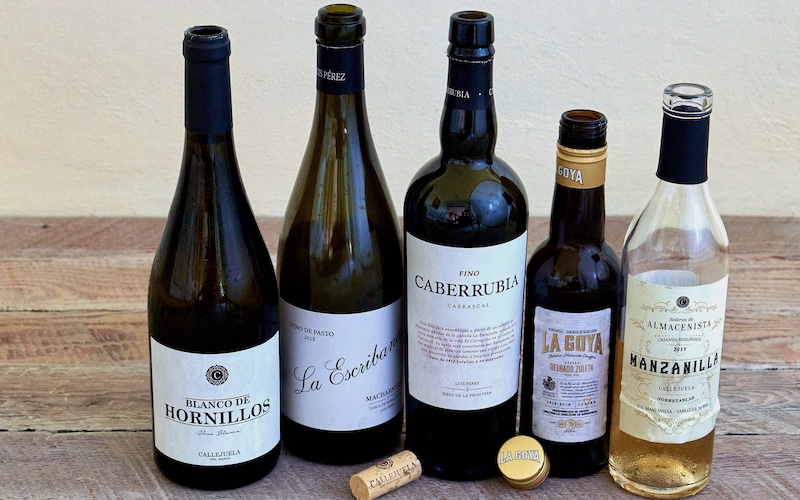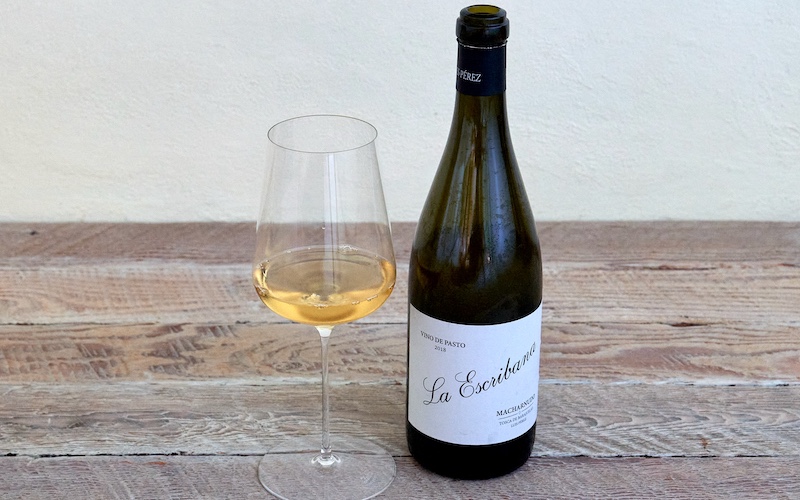For over 50 years, to be classified as Sherry a wine produced in Jerez had to be fortified with neutral grape spirit to raise its alcohol to at least 15%. Historically though, not all Sherry was fortified, some made it to the requisite strength of 15% simply from a little sun-drying and time spent ageing under flor, and were still legally called Fino.


Changes to the appellation rules in 2020 mean they can be again! There are also delicious table wines produced in Jerez from the same palomino grapes used to make traditional Sherry. So, thanks largely to Spanish wine importer Scott Wasley of The Spanish Acquisition (see FAQ below), it’s time to stop talking simply about Sherry and start talking about all the wines of Jerez under the broader categorisation of Marco de Jerez. Here are examples of Marco de Jerez wine, all made from palomino grapes in Jerez, ranging from unaged table wine to complex fortified Sherry, including a couple that are the first of their kind in 50 years! Enjoy a glass with Manchego, Endive & Orange Salad (see video below).

Callejuela ‘Blanco De Hornillos’ (12.5% alc)
Aged in stainless steel without flor, this pale 12.5% wine with a dusty, savoury nose and tart, grippy, moreish palate hails from Sanlúcar de Barrameda, home of Manzanilla. The coastal breeze gives it a nice minerality with a hint of iodine and very pleasant slightly bitter finish.

Bodegas Luis Perez ‘La Escribana’ Palomino de Pasto (13.5% alc)
Classified as a palomino de pasto (the first in 50 years), this link between simple palominos and full-on Finos spent a year under flor in an 80-year-old bota (barrel). Pale gold with a savoury hint of forest floor, there’s a lovely light citrusy tang and slightly nutty finish. A delicious aperitivo!

Bodegas Luis Perez NV ‘Caberrubia’ Fino en Rama (16% alc)
The first natural alcohol Fino in 50 years, at 16%, this golden drop surpassed the minimum Fino strength without any fortification, just a little sun-drying. It’s mouth-filling with a long, herbal, savoury start before a tangy, deeper savoury/almost meaty, briny saltwater finish and a final touch of nutty rancio.

Delgado Zuleta ‘La Goya’ Manzanilla (15% alc)
Manzanilla started my love affair with Sherry and this classic fortified pasada version, aged for 8 years, reminds me why! Pale gold despite its age, bottled before the flor died off, it still has simple seaside flavours, perhaps a little richer with abalone shell rather than oyster.

Callejuela Manzanilla de Pago Callejuela 2017 (17% alc)
With deep briny seashell notes and a distinctive rancio mid-palate, this vintage golden beauty went into barrel at 15%, reaching 17% after 4 years of static-ageing under flor (rather than the solera blending typical of most Sherries). Restrained and elegant, ultra-dry, with a great grip, it just keeps getting nuttier.
Wines available in Australia from The Spanish Acquisition.
Updated 06 Dec 2024






Marco de Jerez is the historical name for the wine region of Jerez that includes the Sherry appellations ‘Jerez-Xérès-Sherry’ and ‘Manzanilla – Sanlúcar de Barrameda’ but also takes in non-Sherry styles like simple palomino wines and vino de pasto.
The most radical change in our conceptions of Fino ‘Sherry’ is that it no longer has to be fortified in order to be classified. It is legal again to get these wines up to strength (15% or a bit more) by concentrating via soleo (sun drying) rather than fortification. This practice was common until the mid-twentieth century when the governing body (Consejo) changed the rules to make fortification compulsory.
We once defined Fino Sherry as ‘fortified white wine of around 15% alcohol, aged under flor for at least 2 years and blended in a solera system’. Now the appellation includes ‘statically-aged’ vintage Finos and Manzanillas, such as the Callejuela above, with no movement of the wine and no fractional blending. There were rare examples of vintage Sherries in the past, but under the new regulations we’ll see a lot more of these wines that are made to express vintage and vineyard conditions much more.
It’s time to stop drawing a firm line between the flor-aged wines of Jerez that reach a certain alcohol strength (i.e. Sherry) and the lower-alcohol table wines (that may or may not have spent time under flor). Instead the wines of the Jerez region are on a smooth continuum from a fresh unaged wine of 12-13%, through the bridging vino de pasto which spends some time under flor but doesn’t reach 15% alcohol, to the Sherries that achieve 15% or higher, whether that’s by sun-ageing or fortification and whether they are fractionally-blended (solera system) or statically-aged (vintage).